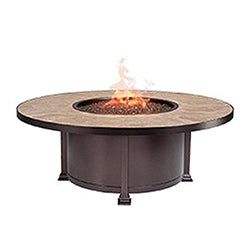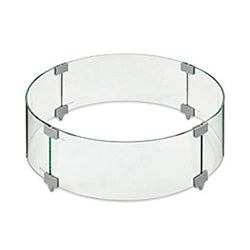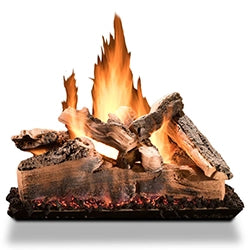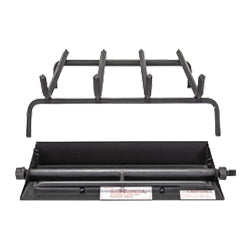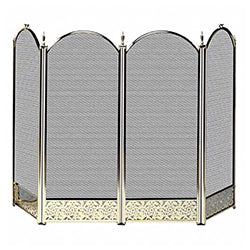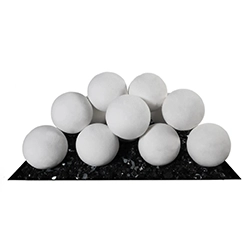Make the dream a reality with a custom DIY natural gas fire pit. A fire feature makes a wonderful addition to your outdoor living area and can provide warmth and accent lighting during those chilly evenings. While there are a variety of pre-made selections available, do-it-yourself projects are a crafty, inexpensive alternative for anyone willing to get their hands dirty.
Fire pit basics
Assembling a fire pit in your residential or commercial space requires creativity, physical labor, and parts. Designing your own fire pit from bricks, cinderblocks, and pavers offer a unique masonry craftsmanship whereas modifying an unfinished DIY fire pit allows you to personalize it to match your existing decor. Regardless of which handcrafted method you prefer, you'll need a fire pit burner, a gas valve, and fire media for showcasing a radiant and fiery centerpiece. The small holes on top of your fire burner, called ports, are responsible for the appearance of your fire pit's flames. To turn the gas on and to adjust the flame height, you'll need to use a gas valve, which connects your fuel supply to the burner. Instead of purchasing each part individually, fire pit burner and ignition kits are handy as they contain the burner pan, fire ring, and ignition system in a package. This is a convenient option for anyone looking to make a single purchase without attempting to figure out the individual parts required for a DIY project.
Optional parts that simplify the task
In addition to required parts, you might consider optional accessories, such as a burner pan or form fitting fire pit ledge. A burner pan is used for supporting the fire pit ring. A form fitting ledge is a bracket that fits inside the enclosure's interior wall and provides the burner pan with support. While a burner pan and form fitting ledge are not necessary, they reduce the amount of fire glass, lava rocks, or fire shapes you'll need for a cleaner, professional looking installation. Use the fire glass calculator to determine how much fire media is required. But regardless how artistic you are with your custom project, it is important the burner kit is compatible with the fuel type you plan on using.

Professional help may be required
If you need to extend your gas line, then professional installation is required. Some residences and businesses are already equipped with gas lines, so taking advantage of the local amenities and services can help you save money when considering long-term investments. According to FIXR, which offers costs comparisons for remodeling projects, the national average for extending a gas line falls between $200-$500. However, gas installation costs vary per region. FIXR provides a helpful gas line calculator tool that estimates how much it might cost based on your zip code.
The local codes and regulations in your area can determine whether your fire feature is suitable for your outdoor living space. For instance, metropolises and suburbs usually have gas lines readily available whereas rural areas do not. Residents in Southern California can contact one of the NFI certified gas specialists at Starfire Direct. Customers in other regions can speak to a regional NFI certified gas specialist to provide localized expertise on the proper installation.
Natural gas offers clear benefits
Natural gas has several benefits over propane fuel. It dissipates into the atmosphere better than its propane and wood counterparts. It is more eco-friendly and more cost efficient since you don't have to worry about refilling a propane tank, or replenishing logs when wood runs out. In addition, the investment of a natural gas line is great, as hookups are permanent and can add property value in the future. Plus, gas lines are typically hidden so visible hoses won't be a concern when it comes to selling your home to prospective buyers or when having visitors over.
Other considerations
Unlike propane fire pits, which are generally desired for portability and heat output, once you install a natural gas fire pit it's a permanent fixture. But you can feel confident that your natural gas fire pit will be enjoyed for generations.
Whether building a fire pit in the ground or sprucing up an unfinished frame, do-it-yourself projects are a fun, artistic way to bring family and friends together without breaking the bank. They provide a warm, inviting ambiance and handcrafted appeal that you can be proud of. However, it's important to remember that selecting the right fuel type not only depends on your preference but whether the installation conforms to the local codes and regulations in your area. Speaking with a local NFI Certified Gas Specialist may help determine the proper installation method for your custom project.








